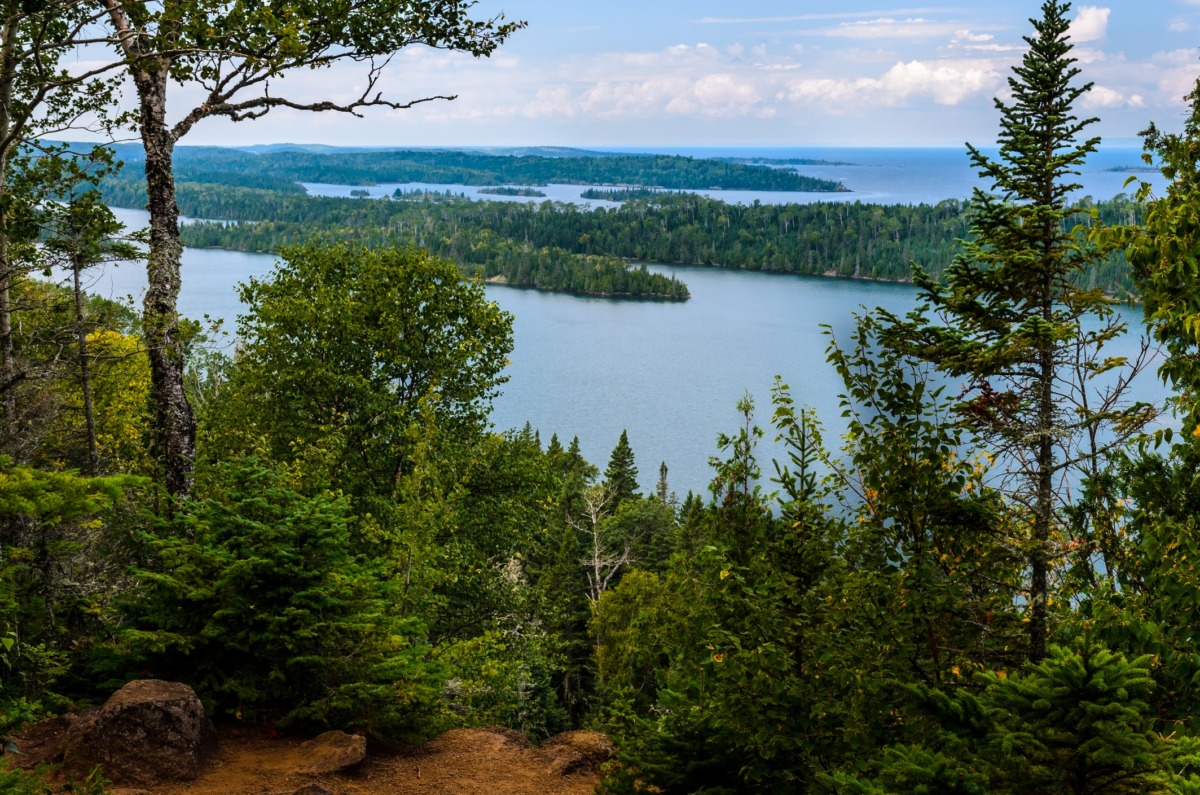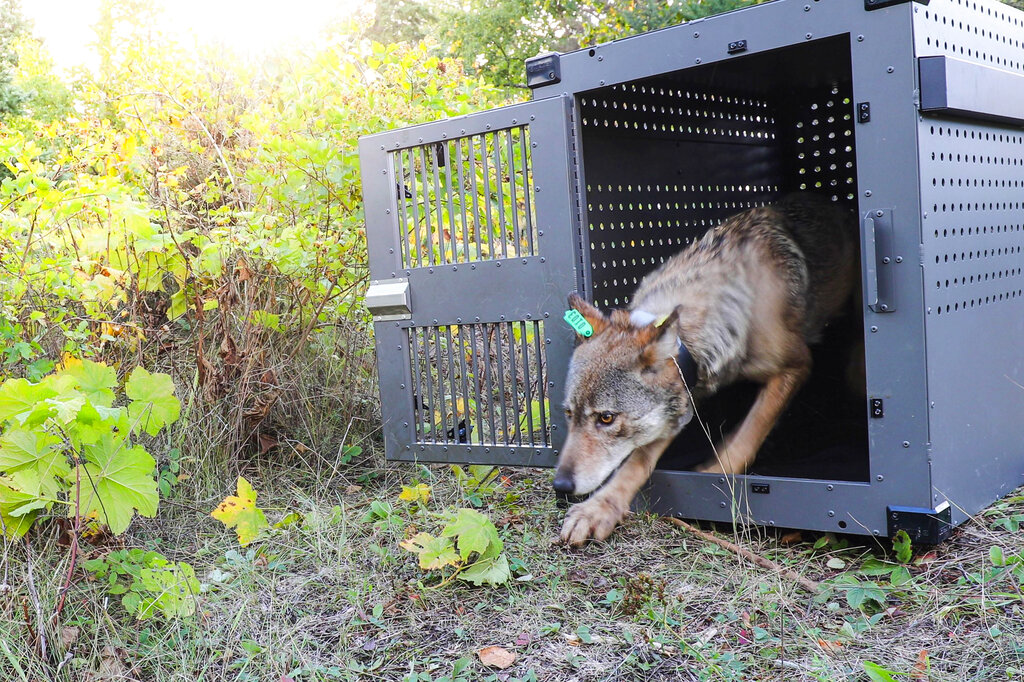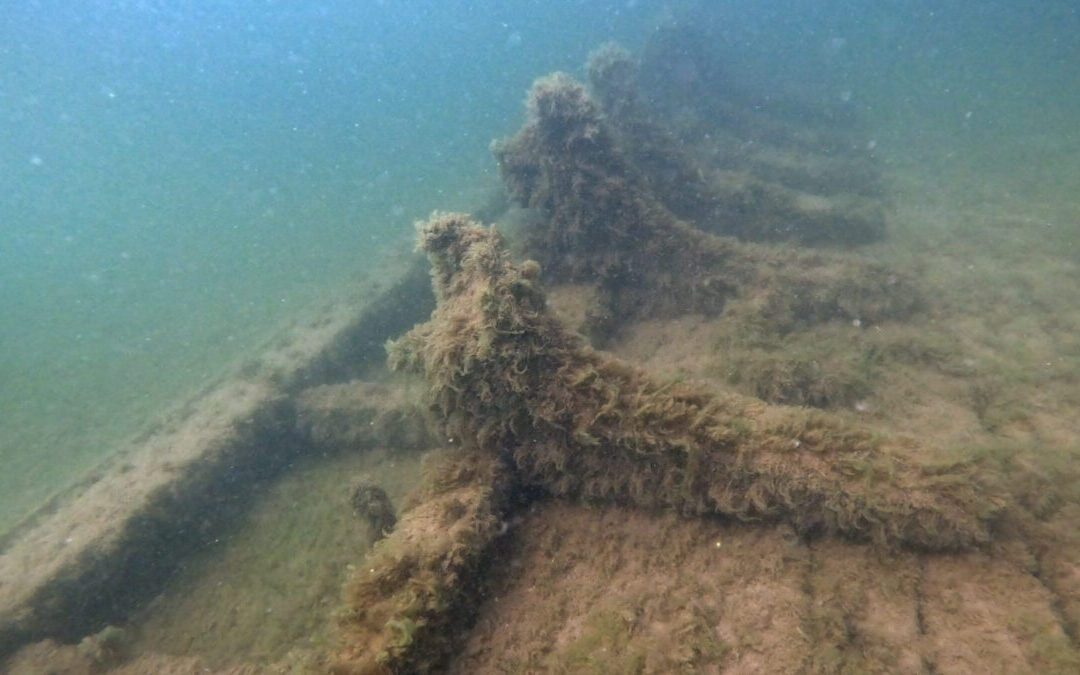
Lookout Louse at Isle Royale, Michigan. ( Source: Posnov/Getty Images)
A quick history of Isle Royale National Park.
It’s been nearly 100 years since Congress authorized one of the country’s most beautiful and remote national parks.
Way up in the northernmost point of Michigan’s border, this landscape remains one of the most isolated and rugged locales nature-seekers can visit.
I’m talking about Isle Royale National Park (sidenote—royale is pronounced like “royal” in this context). Isle Royale sits in northwest Lake Superior, encompassing an area of more than 206 square miles; it’s the fourth-largest lake island in the world. The park itself is actually composed of Isle Royale and 450 surrounding smaller islands. Those who’ve set foot in the park say that the area is so untouched that it feels like they have been transported back 1,000 years.
There’s so much history to uncover about Isle Royale that it’d be impossible to condense it all into this newsletter—but I’ll give it my best shot. Today, I’m bringing you a history snapshot of the remarkable Isle Royale National Park. Let’s begin.
Early history and establishment
Long before Michigan or even the United States were founded, Isle Royale was an important part of the history of the Anishinaabe peoples in the area. The island was named Minong (meaning “the good place”) by members of the Ojibwe tribe.
People of various Anishinaabe tribes would take a 13-mile canoe trip from the mainland of modern-day Minnesota and Ontario to the island, where they would hunt, fish, gather plants, and mine for copper. Testing of wood in the area has revealed copper artifacts dating back as far as 6,500 years. Because of it’s rugged nature, it was not believed to be home to any permanent Indigenous settlements—limiting their visits to the summer.
The Anishinaabe believe that the waters surrounding Isle Royale are home to Mishepeshu, a powerful underwater lynx.
European colonization began in 1671 when French explorers claimed the island and British claim would follow soon after.
The British passed ownership of the island to the United States in 1783 following the conclusion of the Revolutionary War. Throughout this European expansion and the following decades, the Ojibwe people continued considering the island their territory until formally ceding Isle Royale to the United States in an 1844 treaty.
The treaty came less than a decade after Michigan had formally become a state in 1837. As Michiganders explored northward, the state’s first geologist, Douglass Houghton, published a report of the island’s resources in the mid-1840s—setting off a copper boom in the area.
Mining, however, proved to be a challenging business for the people who chased the opportunity. Between the island’s rugged nature, harsh winter climate, and isolated location, copper mining on the island followed a pattern of quick booms until a mine was depleted and lulls that would last years until a new deposit was found. Many miners were injured or died due to drowning or mine accidents. By the end of the 19th century, the last of the copper businesses gave up on the island, selling their land.
Copper wasn’t the only resource that was sought after on the island. Commercial logging continued on the island well into the early 1900s, leading to much of the island becoming deforested.
On March 3, 1931, Congress authorized Isle Royale National Park, with President Herbert Hoover wanting “to conserve a prime example of North Woods Wilderness.” Isle Royale National Park was established on April 3, 1940, by President Franklin D. Roosevelt.
Following its establishment as a natural park, Isle Royale was able to regenerate from its years of resource exploitation.
In 1976, Isle Royale became a federally protected wilderness area under the National Wilderness Preservation System. Today, over 99% of Isle Royale is designated wilderness.
READ MORE: 10 Facts That Make Isle Royale National Park Unique

A map of Isle Royale National Park. ( Source: Public Domain)
Wolves and moose
Isle Royale is notable for being home to the longest predator-prey study in the world—the relationship between the island’s wolf and moose population.
Neither animal is native to the island. It’s believed that moose originally swam to the island or were stocked on the island by humans for hunting purposes. In 1949, wolves crossed an ice bridge from Ontario to the island during a harsh winter. A cycle exists between the moose and wolves in which moose populations increase, leading to more wolves until levels balance out when fewer moose are found and wolves begin to starve.
Since 1958, researchers have studied the unpredictable population fluctuation between the moose and the wolves on the island.
The story itself is incredible and features some drama, including a recent intervention by the National Park Service when it looked like the wolf population was doomed. To read the full story, I encourage you to read this ‘Gander write-up: Isle Royale: A Michigan Hidden Gem That‘s More Than a Battleground for Wolves and Moose

FILE – In this Sept. 26, 2018, file photo, provided by the National Park Service, a 4-year-old female gray wolf emerges from her cage as it is released at Isle Royale National Park in Michigan. A group of scientists urged the Biden administration Thursday, May 13, 2021, to restore legal protections for gray wolves, saying their removal earlier in the year was premature and states were allowing too many of the animals to be killed. (National Park Service via AP, File)
Visiting Isle Royale
While Isle Royale remains one of the least-visited national parks (about 29,000 in 2023), there is a lot to do there, and it’s open to the public from April 16 through October 31 annually.
Isle Royale is only accessible by ferry, seaplane, or private watercraft, and officials warn prospective visitors to prepare for hazardous conditions and situations if they’re interested in visiting.
Once there, though, visitors can experience activities like backpacking, camping, fishing, scuba diving, kayaking, boat tours, and more.
For those looking for a less rugged experience, the island is home to the Rock Harbor Lodge—a full-service lodging facility.
If you’re interested in visiting, check out the National Park Service’s Isle Royale page here.

7 creepy facts about Michigan they don’t teach you in school
Immerse yourself in the spirit of the season with seven creepy (or simply unexplained) facts about Michigan that textbooks ignore. Disappearing...

That one time in Michigan: When an official funeral was held for frozen pizzas
The next time you’re forced to discard a recalled product, draw inspiration from one of Michigan’s most inventive pizza producers. We’ve all...

Great Lakes features mystery triangle blamed for disappearances. Is the legend true?
Beware when heading out onto Lake Michigan—legend says ships are known to vanish in what's known as the Lake Michigan Triangle, or do they? The area...

5 unsung films that dramatize America’s rich labor history
By Peter Dreier, Occidental College The U.S. is in the midst of a new upsurge of union organizing. Is a Hollywood drama about angry Starbucks...

St. Clair: The storybook Michigan town with a surprising world record
St. Clair, Michigan, not only exudes charm and offers plenty of adventures, but it also boasts an impressive world record. As a lifelong resident...





